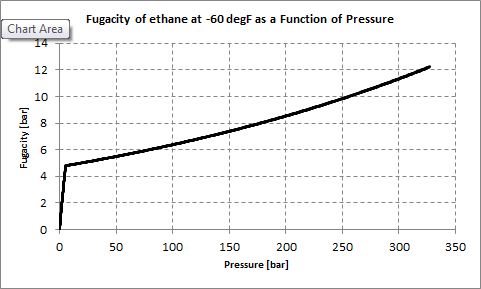The key difference between activity and fugacity is that activity refers to the effective concentration of a chemical species under non-ideal conditions, whereas fugacity refers to the effective partial pressure of a chemical species under non-ideal conditions.
Activity and fugacity are important chemical concepts in thermodynamics. These terms are defined for non-ideal behaviour of real gases.
CONTENTS
1. Overview and Key Difference
2. What is Activity
3. What is Fugacity
4. Side by Side Comparison – Activity vs Fugacity in Tabular Form
5. Summary
What is Activity?
Activity is the measure of the effective concentration of a chemical species under non-ideal behaviour. The concept of activity was devised by the American chemist Gilbert N. Lewis. Activity is a dimensionless quantity. The value of the activity for a particular compound depends on the standard state of that species. For instance, the value for substances in solid or liquid phases is taken as 1. For gases, the activity refers to the effective partial pressure, which is the fugacity/pressure of the gas that we consider. Furthermore, the activity depends on the following factors:
- Temperature
- Pressure
- Composition of the mixture, etc.
That means; the surrounding affects the activity of a chemical species. The gas molecules under non-ideal conditions tend to interact with each other, either attracting or repelling each other. Therefore, the activity of a molecule or an ion is affected by the chemical species present in its surrounding.
What is Fugacity?
Fugacity is a measure of the effective partial pressure of a chemical species under non-ideal conditions. The value of fugacity for a particular chemical species such as a real gas is equal to the pressure of an ideal gas which has the temperature and molar Gibbs energy equal to the real gas. We can determine fugacity using an experimental method or using some other model such as Van der Waals gas (that is closer to a real gas rather than an ideal gas).
Fugacity coefficient is the link between the pressure of a real gas and its fugacity. We can denote it using the symbol ϕ. The relationship is,
ϕ = f/P
Here, f is the fugacity, while P is the pressure of the real gas. For an ideal gas, the values of pressure and fugacity are equal. Therefore, the fugacity coefficient for an ideal gas is 1.

Figure 01: Fugacity of Ethane
Besides, this concept of fugacity is closely related to the activity or thermodynamic activity. We can give this relationship, activity = fugacity/pressure.
What is the Difference Between Activity and Fugacity?
The key difference between activity and fugacity is that activity refers to the effective concentration of a chemical species under non-ideal conditions, whereas fugacity refers to the effective partial pressure of a chemical species under non-ideal conditions. Therefore, in concept, thermodynamic activity is the effective concentration of real molecules, i.e. real gases, while fugacity is the effective partial pressure of real gases. Furthermore, we can determine the fugacity using an experimental method or using some other model such as Van der Waals gas (that is closer to a real gas rather than an ideal gas), and this value equals activity*pressure of the real gas.
Below infographic summarizes the difference between activity and fugacity.

Summary – Activity vs Fugacity
Activity and fugacity are important chemical concepts in thermodynamics. In summary, the key difference between activity and fugacity is that activity refers to the effective concentration of a chemical species under non-ideal conditions, whereas fugacity refers to the effective partial pressure of a chemical species under non-ideal conditions.
Reference:
1. Jones, Andrew Zimmerman. “Laws of Thermodynamics.” ThoughtCo, Sep. 7, 2019, Available here.
Image Courtesy:
1. “Fugacity versus pressure of ethane at -60 degF” By Stieltjes – Excel graph using Peng-Robinson EOS (CC BY-SA 3.0) via Commons Wikimedia
ncG1vNJzZmivp6x7pbXFn5yrnZ6YsqOx07CcnqZemLyue8OinZ%2Bdopq7pLGMm5ytr5Wau26twq2gr6GkrnqiusNmna6fkZi2tcWO